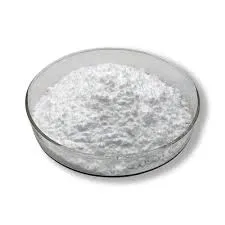
Nov . 24, 2024 08:43 Back to list
how to dissolve hpmc in water
How to Dissolve HPMC in Water
Hydroxypropyl Methylcellulose (HPMC) is a versatile polymer widely used in various industries, including pharmaceuticals, food, and construction. It functions as a thickener, binder, and film-forming agent. For optimal performance, it is essential to dissolve HPMC properly in water. This article provides a step-by-step guide on how to achieve an effective dissolution.
Step 1 Gather Materials
To dissolve HPMC in water, you will need the following materials
- HPMC powder - Distilled or deionized water - A clean container for mixing - A stirring tool (e.g., a magnetic stirrer, mechanical mixer, or whisk) - A scale for measuring (if necessary)
Step 2 Measure HPMC and Water
The dissolution process begins with measuring the appropriate amount of HPMC and water. The typical ratio varies depending on the desired viscosity, but a common initial concentration is around 1-2% HPMC in water. Accurately weigh the required amount of HPMC to ensure consistency in future formulations.
Step 3 Add HPMC to Water
Slowly sprinkle the measured HPMC powder into the water. It is crucial to add the powder gradually to prevent clumping. Adding too much powder at once can lead to agglomeration, making it difficult to achieve a uniform solution.
how to dissolve hpmc in water

Step 4 Stir the Mixture
Once all the HPMC is added, begin to stir the mixture gently but thoroughly. Using a mechanical mixer or a magnetic stirrer can help maintain a continuous and even dispersion. If you are stirring by hand, make sure to whisk vigorously, ensuring that the HPMC particles are adequately hydrated and suspended in the water.
Step 5 Allow for Hydration
After thorough mixing, let the solution sit for a few minutes to allow the HPMC to fully hydrate. This step is essential, as HPMC absorbs water and swells, resulting in a thicker consistency. Depending on the grade of HPMC, this can take anywhere from 15 minutes to a few hours.
Step 6 Check for Uniformity
Finally, inspect the solution for any undissolved particles. If lumps remain, continue stirring until a smooth and homogeneous mixture is obtained. Once dissolved, HPMC is ready for use in various applications, such as formulating gels, pastes, or adhesives.
Conclusion
Dissolving HPMC in water doesn’t have to be complicated. By following these steps, you can achieve a consistent and effective solution that meets your specific needs. Whether for culinary, pharmaceutical, or industrial purposes, properly dissolved HPMC can enhance the quality of your products significantly.
-
Versatile Hpmc Uses in Different Industries
NewsJun.19,2025
-
Redispersible Powder's Role in Enhancing Durability of Construction Products
NewsJun.19,2025
-
Hydroxyethyl Cellulose Applications Driving Green Industrial Processes
NewsJun.19,2025
-
Exploring Different Redispersible Polymer Powder
NewsJun.19,2025
-
Choosing the Right Mortar Bonding Agent
NewsJun.19,2025
-
Applications and Significance of China Hpmc in Modern Industries
NewsJun.19,2025







